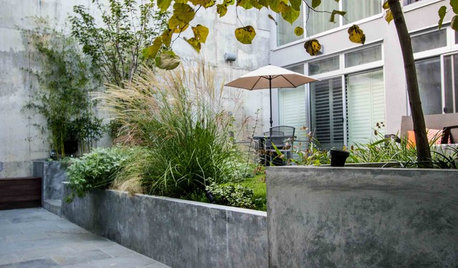KBG went dormant. Now What?
lamcon
16 years ago
Related Stories

URBAN GARDENSFrom Concrete ‘Jail Yard’ to Lush Escape in Brooklyn
Once stark and uninviting, this urban backyard is now a welcoming retreat for relaxing and entertaining
Full Story
FALL GARDENING6 Splendid Blue-Flowering Bulbs
How do you blue? With colors from sky to cobalt, these bulbs will greet you merrily in a spring garden
Full Story
GARDENING GUIDESSpring Citrus Care Reaps Months of Sweet Rewards
Learn how to tend citrus trees in spring and ways to preserve their delicious fruit
Full Story
EARTH DAYThe Case for Losing the Traditional Lawn
Work less, help the environment and foster connections by just saying no to typical turf
Full Story
MOST POPULARWhat to Do After a Hurricane or Flood
How you treat your home after a natural disaster can make all the difference in its future livability — and your own personal safety
Full Story
GARDENING FOR BUTTERFLIESGreat Design Plant: Lungwort
Yes, the name is unfortunate. But the flowers and foliage are delightful, and this perennial is easy to grow and shunned by deer
Full Story
MOST POPULARHow to Finally Tackle Your Closet's Critical Mess
It can be tough to part with reminders of your past, but your closet needs space for who you are today
Full Story
WINTER GARDENINGPruning Secrets for Exquisite Roses
Encourage gorgeous blooms year after year with this time-tested advice on how to prune your rosebush in winter for health and shape
Full Story
LANDSCAPE DESIGNCalifornia Says Goodbye to the Sprawling Ornamental Lawn
New state rules will effectively limit turfgrass to 25 percent of the landscape in most new and renovated yards
Full Story
EXTERIORSWhere Front Yards Collide: Property Lines in Pictures
Some could be twins; others channel the Odd Couple. You may never look at property boundaries the same way again
Full Story


kqcrna
bestlawn
Related Discussions
Lawn going dormant.... now?!?!?
Q
Dormant seeding -- Now in the north?
Q
what best month for dormant seeding results in north jersey
Q
TTTF vs. KBG -- what are the requirements?
Q
kqcrna
woodycrest
bestlawn
quirkyquercus
bestlawn
kqcrna
woodycrest
bestlawn
woodycrest
woodycrest
auteck
User
woodycrest
heelsfan
User
subywu
woodycrest
turf_toes
User
User
subywu
turf_toes
User
gbig2
subywu
bestlawn
turf_toes
subywu
gbig2
User
subywu
gbig2
User
lamconOriginal Author
subywu
gbig2
bestlawn
bpgreen
mrl05
turf_toes
mrl05
gbig2
subywu
bestlawn
woodycrest
User
gbig2
bestlawn